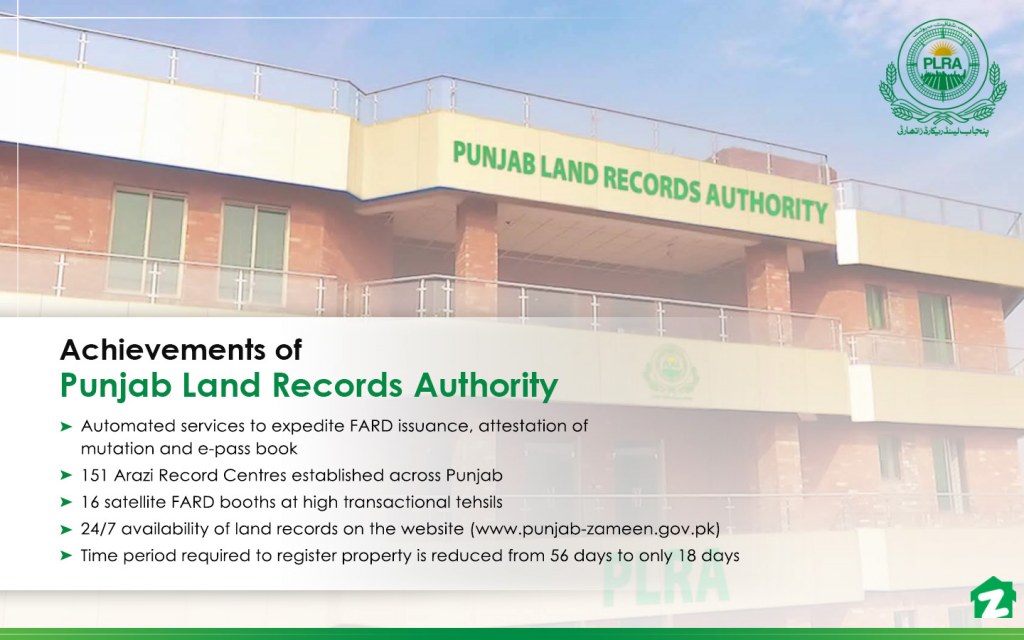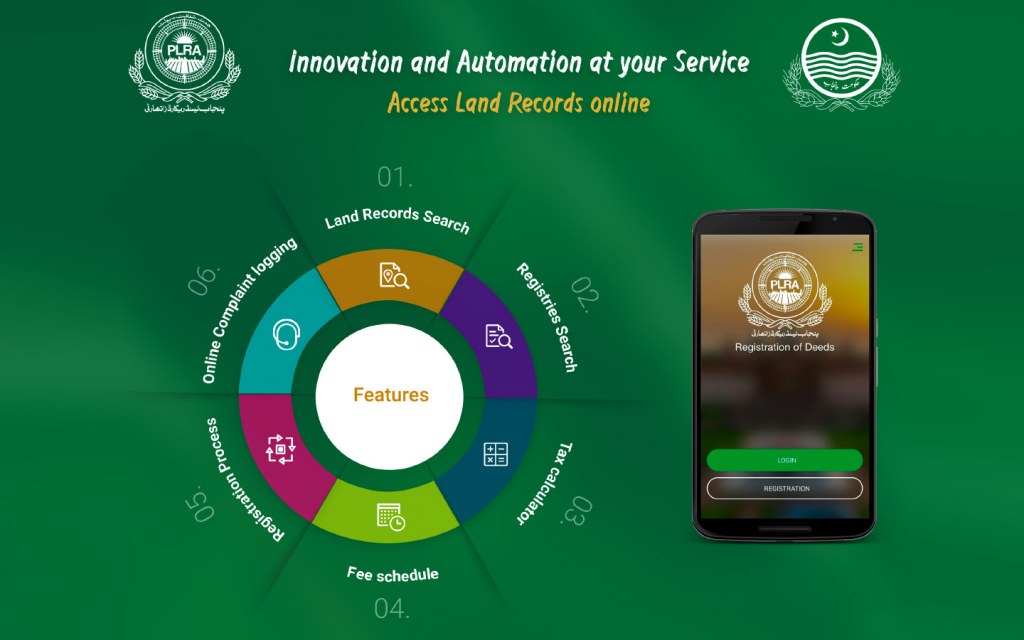Home » Real Estate Trends » Digitization Of Urban Land Record Systems
Previously, the government of Punjab had introduced the digitization of land records, especially in rural areas, to fight off any inequalities of land distribution, tenure insecurity and to address issues related to land administration, transactions and registration system. It has significantly helped small landowners and the marginalized communities for making these records less dispersed, improving service delivery and ensuring that the land rights of women and farmers are protected. Based on the successful implementation of digitization of land records in rural areas, the Board of Revenue is planning digitization of urban land record systems. But let us first understand why there is a need for it.
Why is there a need for digitization of urban land record systems?
The Supreme Court of Pakistan, which restricted the role of patwari in sale, purchase and transfer of land in urban areas earlier this year, has called for an alternative land record system. The apex court believes that the prevailing system to record land is not only outdated but also corrupt. It also stated there is a dire need to make things transparent and modern via digitization of urban land record systems
At present, the recording of urban properties is done through the registration of deeds which lacks detailed information. The registration of deed of property is overtly allowed with no compulsion to provide any proof of ownership. Due to the absence of a transparent, digitized system of recording land rights in urban areas, both public and private sector agencies have formulated their own methods to record these in their areas of jurisdiction. As per a news report in a local English daily, the government of Punjab and the Planning and Development Board, Punjab are planning to have, “A unified, formal system wherein, the individual rights will be secured and certified copies be issued in favour of an individual and a clear distinction between rural and urban properties will be ensured.”
It is important to note that the final approval for the computerization of urban land record systems has been given by the Prime Minister of Pakistan, Standing Committee of Cabinet on Finance & Development for Punjab and the Chief Minister of Punjab. The process will be facilitated via the assistance and technical expertise of the World Bank.
The role of a Patwari
So, who is a patwari and what powers does he have? Why has the Supreme Court issued orders to restrict the role of a patwari in the selling and buying of property? Well, a patwari is one of the most influential and resourceful people of an area, although, officially speaking, he has the lowest ranking in the official hierarchy. Why, then, does he enjoy so much power? It is because he is responsible for manually maintaining land records. The FARD, which is the most important ownership document, is also issued by a patwari. All of the information related to certificate of possession is only authorized by a patwari.
The establishment of LRMIS
According to a news report published in a local English daily in August, there are approximately 6,934 patwaris working in Punjab, maintaining land records for 55 million landowners.
To discourage the usurpation of rights of rightful landowners and to stop corruption in the land record systems, the government of Pakistan and the World Bank had signed an agreement in 2007 for a project called Land Record Management and Information System (LRMIS) in Punjab. The main objectives of this initiative were to give complete access to land records at low transaction costs, to enhance transparency in land transactions and to enhance the tenure security of land right holders.
Initially, LRMIS was designed to offer services in 18 districts of Punjab. Later, the project expanded to all 36 districts. The World Bank also extended its support and a Project Management Unit (PMU) was established in the year 2007 for the computerization of land record and to oversee the overall interventions.
The formation of PLRA for digitization of rural land records

Once the Project LRMIS was completed, the Government of Punjab formed the Punjab Land Record Authority (PLRA). Punjab Land Records Authority was set up through PLRA Act-2017, under the administrative control of the Board of Revenue, Government of Punjab. In a short span of time, PLRA achieved many milestones. The establishment of Arazi Record Centers (ARC) by PLRA in all the districts of Punjab has helped in the timely issuance of FARD and has smoothed the process of registration of land mutation.
Various records which were managed manually, such as Register of Haqdaran-e-Zamin, Register of Gardawari, Register of Intiqaalat, have been digitized by PLRA to strengthen the land record systems in the rural areas.
As per the official stats by PLRA, in a short span of five years, they have scanned 10 million pages of the manual records and completed digitization of land records for over 55 million small landowners. PLRA has also digitized the process of land title information.
How to access land records online

It is simple. You just have to download the PLRA app on your android phone. You can access the following information and services:
- Land records search
- Registries search
- Tax calculator
- Fee schedule
- Registration process
- Online complaint logging
Digital-PLRA has automated manually maintained registration data—a process that traditionally takes place at the sub-registrar office. This has further enhanced the role of Arazi Record Centres. Apart from being able to find the registration details of the relevant land records in the province, the app also facilitates its users by providing them with the property tax calculator. Those who are not living in the country, i.e. overseas Pakistanis, can also get complete first-hand information about their property without any problems through the app.
Updates regarding digitization of urban land record systems
According to a news report published in a local English daily, the ceasing of mutations of urban properties by the revenue offices, as directed by the Supreme Court, has triggered the need to have a systematic and transparent urban land record management system. The court issued orders so that the role of urban land record offices, i.e. patwarkhanas, would only involve maintaining records. The patwarkhanas were also forbidden to make any decisions regarding the transfer of urban properties.
The Punjab government will soon begin the process of computerization of urban land record systems.
Preparing urban records is a challenging task, as the reach of revenue offices is quite limited. Some areas fall under the jurisdiction of Board of Revenue Punjab, but, when it comes to record-keeping, there are multiple owners of a single property unit. When there are discrepancies and multiple owners of a property, the revenue record will not help much and would need to be developed all over again.
Apart from this, the records from both the revenue office and the Excise and Taxation office will also have to be compiled for a survey. As per a news report published in The Express Tribune, “Additional Deputy Commissioner Revenue Lahore Malik Awais – who is also a member of the 17-member committee – said that if transition period is not granted to the revenue department, it would create a very difficult situation for the government with all mutation seized and no alternative system available. “Ideally, it would take at least three to five years to prepare the urban record system because it is a time-consuming and expensive exercise,” Awais said. “Data from other departments would have to be amalgamated with the revenue data of ‘record of right’ so that a survey could be conducted.”
The PLRA, claims that the GIS map of three districts of Punjab—Kasur, Lodhran and Hafizabad—have been completed.
So, these were the latest updates regarding the process of digitization of urban land record systems in Punjab. Stay tuned to the best real estate blog in Pakistan for more informative posts. And, please, don’t forget to send us your feedback at blog@zameen.com



